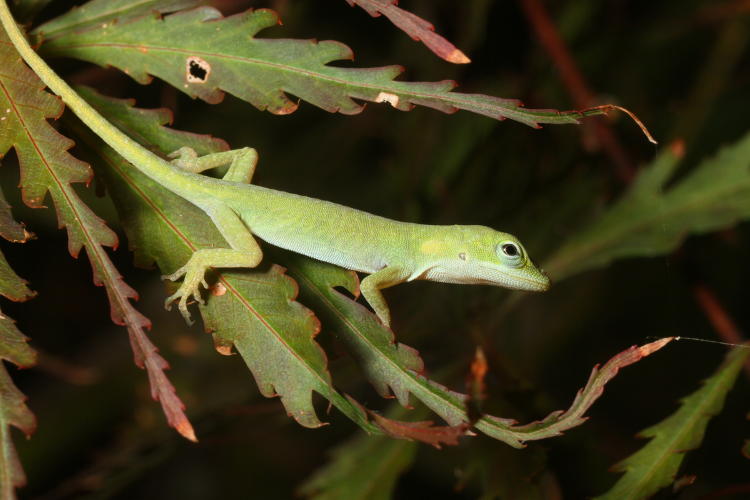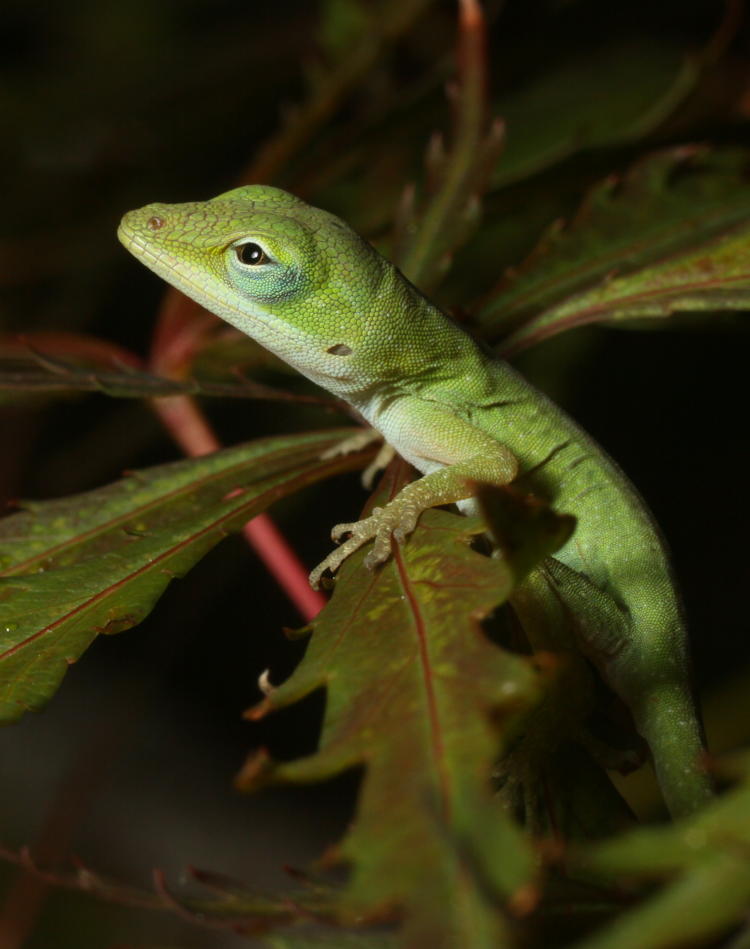So, you surely remember when I first noticed a Carolina anole (Anolis carolinensis) in the yard, and I was pleased because I was hoping to get some established and this was the first sign? And then, a month later I saw it again, proof at least that it was still hanging around? Well, I was wandering around the yard a few hours ago while on the phone, shining a flashlight around casually, and got greeted with this:

That’s a very young one, obviously hatched nearby, because its overall length (with its long whip tail) is less than 60mm, meaning the body itself is maybe a hair over 20, and the head only 5mm wide – that’s less than a pencil. It could sit comfortably on your little finger, is what I’m saying, though here it’s perched on the Japanese maple, right up top where I could spot it easily.
Let’s go in a little closer.

I’m doing a slight disservice with these photos, since being this close isn’t giving a good impression of how cute and tiny it is, but I had no way to provide useful scale without spooking it, and of course I’m still going in for the portrait shots.
This is more success than I was expecting – having a new brood, I mean, since I wasn’t sure if we even had more than the one adult. And actually, it probably shouldn’t be called a ‘brood,’ since they lay only one egg at a time, as I just discovered while researching details for this post. Certainly an auspicious start, but also slightly concerning, since a little over a meter away, one of the resident Chinese mantises had just molted into adult form, massing easily many times the size of this lizard, and quite capable of taking it as a meal. I’d feel better about there being more than one.
By the way, I tried to be welcoming, and provide a little mist for drinking water – the mantids adore this – but the anole got a little panicky at the touch of the water droplets so I stopped. It’s in an area packed with potted plants receiving routine waterings, with lots of prey insects, so it’s got the basics covered; it just has to avoid predators. We’ll have to see what happens.




















































